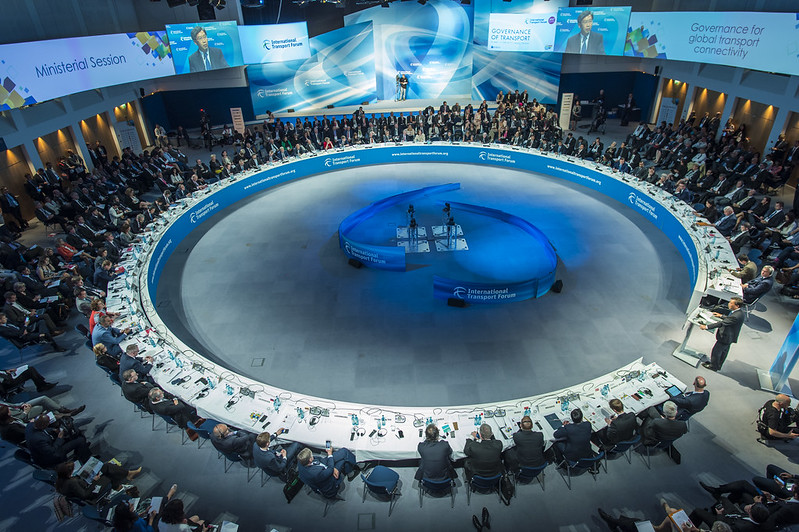Auteur: Alanna O’Malley
Dossier: ‘Governing the World, United or Divided Nations?’
Gasthoofdredacteur: Alanna O’Malley
The COVID-19 global pandemic has raised once more the spectre of world governance, demonstrating in one fell swoop, the intricate entanglement of nation-states and the challenges they face when confronted with a global threat. The pandemic has produced an array of problems, from the deaths of millions, the desecration of health care systems all over the world, to the disruption of the economic and social lives of most of the worlds citizens and the emergence of vaccine politics. While not addressing the pandemic directly, this dossier examines the pandemic moment as both an opportunity and a crisis for the UN and the idea of global governance. The articles in this dossier, drawn from a selection of established academics and younger scholars, highlight the expanding array of issues and challenges the UN faces as its competencies increase in the face of multiplying threats to the global system. The organisation has gained new areas of expertise, consolidated its competencies in some areas while expanding its agency in others. In addressing global challenges, the UN has increased its relevance, normative power and connection to humanity but at the same time its lacklustre performance on a lot of issues has revealed that leadership is lacking, and the organisation has in many cases been found wanting. This dossier examines some of the new challenges facing the UN with a view towards assessing the ability of the organisation to effectively respond to global crises, and whether or not it has the capacity for institutional learning and adaptation in the face of adversity and anarchy.
In April 2020, at the height of the global pandemic, UN Secretary-General Antonio Guterres called for a global ceasefire in light of the massive crisis facing humanity. In his speech he appealed to the global community to unite in the face of the humanitarian catastrophe posed by the pandemic and to cease hostilities in an array of conflict zones from Syria to Sudan. To many, as admirable as Guterres’ intention was, the continuation of fighting during the pandemic, most notably in Syria, Ethiopia and recently between Israel and Palestine, seems to signal that the UN is not doing enough or is ineffective in preserving world peace. However, a closer look at the role of the organisation in reducing armed conflict points to a more complicated picture that includes success as well as failure.
Since 1945, the UN has gradually expanded its competencies and activities in the area of conflict resolution. While it is the politics of the Security Council which dominates international attention, particularly the dynamics between the Permanent Five members (Britain, China, France, Russia, United States), in fact there is much more work going on behind the public debates. Currently, the UN has 13 peace operations across 3 continents preforming the task of both traditional peacekeeping, as in the mission in Cyprus, to more multifaceted peace-making missions which include diplomatic and civil support elements such as MONUSCO in the Democratic Republic of Congo. Many of these global conflicts are intractable, evolving from border disputes into long insurgency wars involving multiple warring parties which constantly shift against a backdrop of weak state power, colonial legacies of engineered ethnic disputes, poverty, displacement, and the lack of social and economic advancement. Given the complicated nature of these conflicts, the notion that a peacekeeping mandate can deliver peace is increasingly misguided. Rather, as the nature of conflict evolves, so too have the challenges and the competencies of the UN in response.
Peacekeeping missions were traditionally arranged to place primacy on inter-state relations, the central idea being that there would be a clear border between the warring parties which peacekeepers could patrol and hence, keep the ‘peace.’ As time progressed however, even in the 1960s, mandates for missions became more expansive, authorizing peacekeepers to use force in self-defence, and suppling a civil mission alongside peacekeepers to help address the humanitarian elements of a conflict. In more recent years, dedicated country teams work to coordinate efforts between various UN agencies, missions and peacekeepers working in the same area. As a more coordinated approach has developed, the UN is able to ‘do’ more to combat the non-military dimensions of conflict which are equally if not more influential on the ability of the organisation to resolve conflict.
On the other side of the debate, however, is the legitimacy problem of peacekeeping missions. This has grown substantially in recent years, especially because of the uneasy relationship between the UN and the International Criminal Court (ICC). In this dossier, Tom Buitelaar investigates whether or not peacekeepers should play a role in helping to bring war criminals to the ICC. While at first glance this would seem to complement the broad objectives of UN operations in the field to deliver sustainable peace and justice by brining perpetrators to court, it casts a shadow on the neutrality of the organization. In his provocative piece, Buitelaar examines this tension in the relationship between the ICC and the UN on one of its core missions.
Another major challenge towards the effectiveness of peacekeeping is the public perception of its success, which comes into view particularly when conflict resurges. The recent bombing campaign between Israel and Palestine in May 2021 again raised the spectre of the UN’s inadequacies in this area. As Diego Salama investigates below, the UN’s various missions in Israel and Lebanon are in fact gradually integrating and cooperating as their responsibilities expand. However, when conflict explodes as the recent surge in violence reflects, the missions are hamstrung due to limited mandates and insufficient materiel and financial support. As Salama asks, in these long-running operations, how can regional relations between missions be developed to enhance the overall effectiveness of individual missions?
Focussing more on the role of women in peacekeeping and peacemaking, Law student Ella Riise MacLeod examines the problems of implementing the Women, Peace and Security agenda which in 2020 marked its twentieth anniversary. Despite the fact that the UN has recognised the special role that women play in creating and maintain peace in conflict situations and have repeatedly called on member-states to implement the WPS agenda more fully, there remain significant gaps. Importantly, Riise MacLeod goes beyond the Security Council in her article, highlighting the role of UN Women, in particular, in helping to implement the agenda, especially in the Global South. She argues that the UN needs to introduce gender parity measures in its peacekeeping operations and until this is achieved, it will be difficult to fully realise the potential of women as peace actors.
The idea of UN governance of course ripples out much further than peacekeeping as the mandate of maintaining international peace and security continues to expand under the framework of human security. The UN’s record on economic and social development and promotion of human rights, tends to be considered in a more positive light in many cases. However, as our other contributors reflect, there remain some significant blind spots.
For example, in a highly original approach, M.A. student Marc Grau considers how disarmament initiatives driven by youth actors need to be integrated further with wider UN programs in this area. This issue goes to the heart of the UN’s record on peace and security although curiously while the world’s largest arms dealers sit on the Security Council, the disarmament agenda received relatively little attention. Grau picks up this thread by analysing what contributions young people have made to further this agenda to date and considering how they can play a stronger role in this area going forward. As he rightly emphasises, closer integration between the UN and young people on this issue is essential in order to create world peace for future generations.
A very different but crucially important issue for young people where the UN has a poor record of success is on sexual health. In this dossier, MA International Relations student Hannah Madelon investigates how this issue comes into focus in the SDG agenda and where governance gaps remain. She outlines the competencies and challenges in this area, pointing out that various targets within different SDGs could be linked to sexual health to improve its visibility as a target of global development. She maintains the crucial importance of linking this issue to gender equality that will address the cultural, political and social norms that sometimes stall progress on this objective.
Finally, striking a provocative note, Isi Madojemu declares that the UN can strengthen its function and relevance by capitalising on its relationship with youth more fully. While young people have long been a specific target of UN policies and programs, much more needs to be done to strengthen their capacity as stakeholders at the UN level. Madojemu’s argument goes to the core of the UN’s relevance to young people, asking to which extent their participation is still considered as tokenistic, and what needs to be done to strengthen their role as key stakeholders. The perception and relevance of the organisation for future generations, he rightly points out, relies on how the UN positions young people more centrally in its multi-stakeholder environment.
What becomes evident from the array of issues that this dossier addresses is that there remain significant gaps between the levels of UN governance that deeply effect its functionality. What is interesting to note is that most of the articles are directed towards the ‘second’ UN: the level of bureaucrats, experts and officials who make up the UN institutions. Especially among the contributions from the younger scholars here, it is clear that perceptions of the UN go far beyond traditional ideas of the organisation as solely made up of 193 member-states. It is also clear that young people consider the UN relevant and constructive for future generations, but much work needs to be done to develop the relationship to this group of actors. Overall, each of the articles reflects a belief in the capacity of the organisation to be developed and adapt to current challenges, and a faith in its ability to function more effectively to preserve the future of humanity.

About the author
Alanna O’Malley is Special Professor of United Nations Studies in Peace and Justice at Leiden University and The Hague University of Applied Sciences. She has a PhD in history from the European University Institute and her first book The Diplomacy of Decolonisation, America, Britain and the United Nations during the Congo crisis 1960-1964 was published in 2018. Currently, she is working on a new project: ‘Challenging the Liberal World Order from Within, The Invisible History of the United Nations and the Global South (INVISIHIST)’ funded by a Starting Grant awarded by the European Research Council in 2019.
